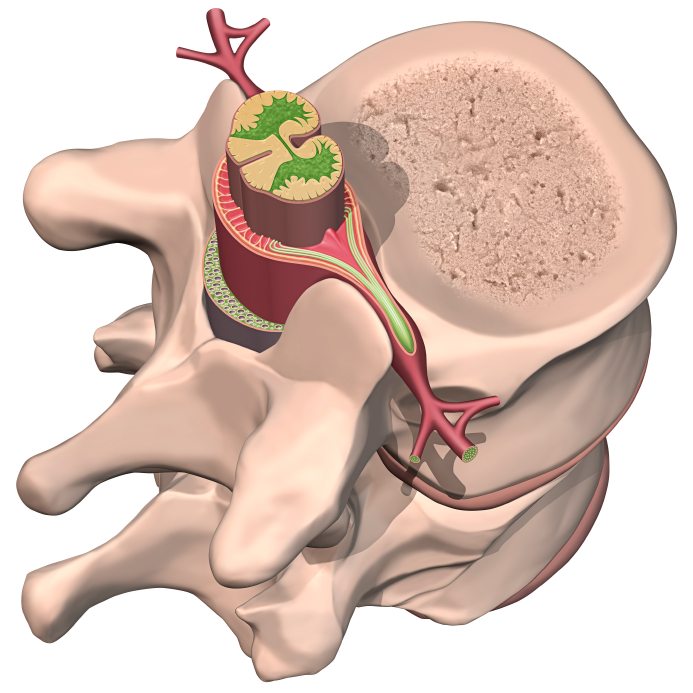What is nerve root pain ?
Nerve roots, of which there are 31 pairs, arise from the spinal cord and provide power and sensation to the limbs and trunk.
Symptoms of spinal nerve root abnormality can include pain, weakness, altered sensation and unusual feelings such as burning or stinging.
Anatomy of the nerve root
Each spinal nerve root leaves the spinal cord through a window or foramen. A variety of anatomical structures in the area can cause irritation or compression of the nerve.
The intervertebral disc can herniate cartilage-like material and allow nerve-irritating chemicals to come into contact with a nerve.
Arthritic conditions can also compromise the room available for the nerve as does age related thickening of the nearby ligaments. This can produce painful swelling (oedema) within the nerve.
Symptoms of nerve root irritation are typically worse in the arms or legs rather than the back or neck.
Patients may notice that burning or stinging pain follows a typical pattern for that nerve i.e. back of the arm or numbness in the thumb pad.
A physiotherapist may identify a loss of a reflex, diminished strength or loss of sensation in the distribution of the affected nerve.

Treatment of nerve root pain may involve medication to reduce nerve irritability. Spinal movement techniques such as traction or neurodynamic techniques performed by the physiotherapist can also help significantly. Strengthening and taping to ‘unload’ the arm or leg maybe used. Less commonly injection therapy and surgery are required.
Differential diagnosis
Mechanical nerve root pain occurs quite commonly in adults with increasing age – related changes in the spine. Conditions such as shingles or infections of the nervous system can be mistaken for nerve compression initially.
Tips for self-management
Your physiotherapist may recommend the temporary use of a soft neck collar. Prolonged looking up or neck rotation may slow recovery. For low back nerve root pain reducing sitting may also lessen leg pain.
Nerve root pain and associated symptoms can take weeks or even months to resolve even with treatment. Your physiotherapist may suggest modifying or reducing work or recreational activities. Emotional stress can cause physiological changes, which also can slow recovery.
Many patients recover well from episodes of nerve root pain even with the presence of degenerative or arthritic changes in the spine as seen on x-rays or scans.
Source:
Iyer, S., & Kim, H. J. (2016). Cervical radiculopathy. Current reviews in musculoskeletal medicine, 9(3), 272–280.
Gregory, G., & McKivigan, J.(2018). Effectiveness of Intermittent Mechanical Traction in Cervical Radiculopathy: A Systematic Review. Journal of Medical Research and Practice, 7(2), 39-46.
Source: http://orthoevalpal.com/episode-68-c8-nerve-root-compression/
Need additional help
Our team at Physica are here to help you with all of your musculoskeletal conditions. Please book on;likne using the link in the header or if you have additional questions prior to bookings contact us via email.
